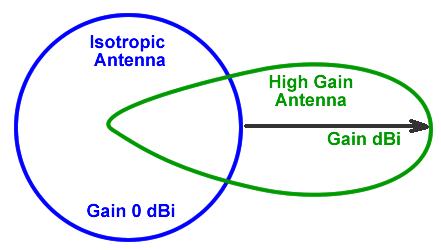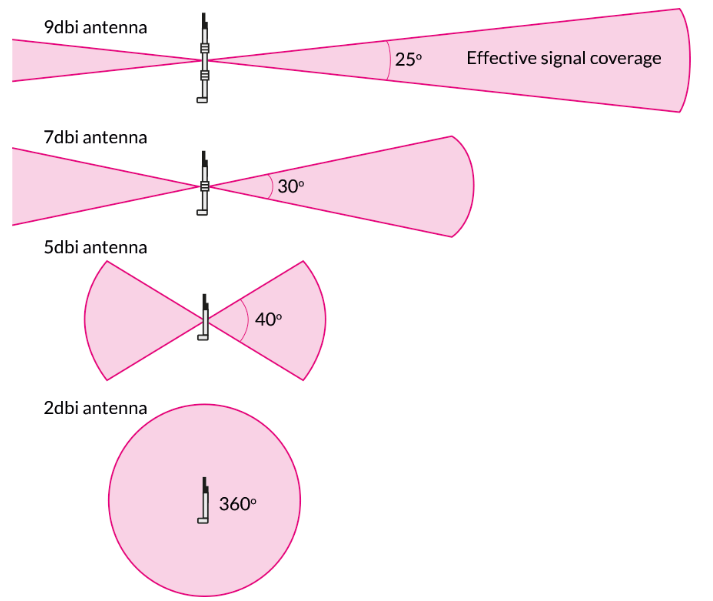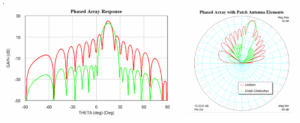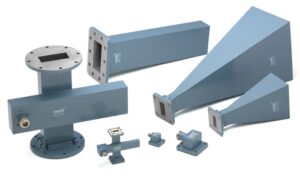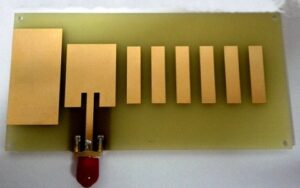Table of Contents
Directional Antennas and Gain
Directional antennas are those that focus energy in directions designed to enhance the signal power and reception quality, and, as a result, significantly increase the antenna gain. The advantage of using this type of element is their capability to “point” the signal in the direction one might want it to be, which detunes noise and increases the quality of signals. Yagi-Uda is a widespread version of a directional antenna that varies from a 7 to a 15 dB gain, depending on the quantity of elements and certain design peculiarities. Parabolic antennas are employed in satellite and radar communications and introductory sources that offer a substantial increase in gain with up to 30 or more dBs.
Directional antennas are essential when long-distance communication is required. In the scenario of point-to-point communications, for example, to transfer data and establish connection between two remote points, using a directional antenna emitting a focused beam is essential to keep the signal strong over kilometers. This is achieved by concentrating the energy burst into a narrow corridor emitted from the feed part of the antenna and reflected by the dish part.
The size of the parabolic antenna directly determines its gain and frequency range. The larger the dish diameter is, the higher the gain, and the smaller the beamwidth is. A 2-meter diameter parabolic antenna applied to C-band frequency will have a gain of up to 32 dB with a beam from 3 degrees. The cost is also crucial when implementing high-gain directional antennas. Although Yagi might be relatively affordable, Parabolic will cost from less than $100 up to $1000, often outpricing the elements it is required to communicate with. At the same time, the cost can be justified by the ability of parabolic antennas to last longer and not require multiple installations. To better enhance the useful life of the elements, the material used for the dish should be aluminum and for the supports – durable plastic, which will also ensure that the element can endure environmental changes. The aerodynamic shape will also diminish the corrosive impact of wind and rain. The average lifespan of antennas is 10 – 15 years. Efficiency is a crucial factor with directional high-gain antennas. Energy losses should be minimal, radiation pattern should be carefully disposed, which depends largely on the architecture available; the quality of the “radiation pattern” and the efficiency can be gauged by how well the forward lobes are developed and their values compared with the percentage of the bulk of the not particularly desired “side lobes” and “back lobes”.
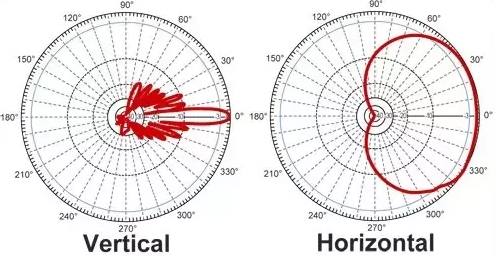
Size Considerations for Maximum Gain
The size of an antenna is perhaps one of the more essential determinants of its gain and overall performance. Gain increases as the size of the antenna increases relative to the wavelength of the signal being sent or received; this phenomenon is limited to the performance and gain of the antenna, and exact sizes appear to be necessary for certain types of antennas, especially with both parabolic reflectors, and large array systems. As time span of signal sending or reception is determined by the size of the possibility to focus it or merely capture more, the amount of gain is also determined by the absolute size of the antenna.
In parabolic reflector dishes, the directivity and gain of the antenna is determined by the size of the dish with increasingly higher gains typically needing a larger dish to achieve. For example, smaller satellite dishes will be commonly found with a diameter of about 75 cm and is given a gain of around 30 – 35 dB for a frequency of around 12 GHz. In contrast, dishes used for long distance telephone or satellite communication will be 10 meters or more in diameter, with their gains typically exceeding 50dB. These relationships are also determined in part by the size of the given frequency being received or sent, as higher frequencies need smaller antennas.
The gain of an antenna is proportional to the area of the antenna aperture divided by the square of the wavelength; thus, smaller frequencies achievement greater capacity for gain. The main drawback to larger antennas of extent size is that they will almost uniformly be more expensive in monetary cost for the erecting as well as land permit needed for the antenna use, with large radio telescopes or deep space communications antennas costing untold millions, if not billions of dollars over their operational lifespan. Additionally, the materials for larger antennas will be more top quality than smaller antennas to handle the increased environmental damage and length of time in the field being maintained for use. Finally, the increased gain from an antenna will also increase the required power to properly operate the antenna, thus there are realistic limitations as to the practicable size of an antenna. An example of such a size efficient, high gain antenna is the Yagi-Uda, which adds substantially to the otherwise simple dipole, while only be less than 10 meters in length and will vary from 8 – 15 dB in gain.
Frequency Effects on Antenna Performance
The frequency at which an antenna operates significantly influences its design, size, and efficiency. Particular antennas are intended to be most efficient when operating at predetermined frequencies . However, a universal truth is that the dimensions of an antenna are typical to the wavelength of the signal it is to receive. To start with, the wavelengths differ and change, with some frequencies carrying shorter wavelengths than others. Thus, for instance, a 300 MHz frequency has a wavelength of about 1 meter.
Undoubtedly, an effective antenna of that frequency also amounts to just one meter . Among other ideas, antennas for mobile phones and Wi-Fi equipment are developed with these frequencies in mind. The result is that such antennas are smaller and have substantial levels of gain or directivity. Accordingly, the products’ respective frequencies are in the GHz range, translating to wavelengths of millimeters to centimeters. Conversely, lower frequencies have longer wavelengths, and thus, antennas ought to be more substantial, which can be observed in the case of radio antennas. Perhaps surprisingly, it should be noted that the frequencies vary in terms of bandwidth. Specifically, the higher the frequency the wider the bandwidth. In fact, such antennas can handle larger amounts of data. A 5 GHz Wi-Fi antenna can transfer data at notably higher rates than a 2.4 GHz antenna, providing faster internet. In addition, the material is also important, since it should be comprised of materials with certain electromagnetic p[1]roperties to be useful within the frequency limits. It is also important that the materials are not expensive. Thus, typically inexpensive substances with high conductivity, such as copper and aluminium, are very common.
Finally, the efficiency measured in terms of power is not less important. In the considered range, the power losses stemming from the skin effect grow rapidly. That is why most antennas operating on those frequencies cannot be called effective. Moreover, they are virtually useless in any circumstance in which power loss is a consideration. Thus, a high-frequency antenna is not an option to be considered when designing an antenna for a space probe or remote sensor. The final factor that should be considered when selecting materials and designs for higher frequencies is cost. The antennas are smaller, but they should be produced with a high degree of accuracy and from high quality materials. For example, when designing an antenna for satellite communication, it was important to use a gold-plated conductor.
Parabolic Antennas: Design and Gain Optimization
Parabolic antennas are well-recognized for their shape, which allows focusing the incoming electromagnetic waves onto a small receiver or transmitter and reaching high directional gain . Such design makes these antennas capable of capturing and directing energy effectively. Currently, they are most commonly utilized for satellite communications and in astronomy. As for their gain, it is determined by the diameter and the efficiency of the surface of a parabolic antenna. For instance, a standard smartphone satellite service dish is likely to have a diameter of about 45 cm, which allows achieving a gain of about 34 dB at 12 GHz . In contrast, the collapsed Arecibo Observatory Telescope in Puerto Rico had a 305-meter antenna, which provided such a massive gain that it could distinguish very faint signals of various objects far in space.
In addition to the diameter, another crucial factor in determining the parameters of a parabolic antenna is its collecting area and the surface. Thus, regarding the surface accuracy, “the reflector must obey the condition that the surface accuracy must be 1/16 th of the wavelength at which the system is designed to operate” . Thus, if an antenna with a frequency of 4 GHz or a wavelength of 7.5 cm was designed, the given regularity implies that the surface roughness of an antenna aiming to operate at this frequency should not exceed 4.7 mm .
The design of the feed arrangement is another significant factor affecting the performance of the constructed parabolic antennas. The feed is placed at the focus of the parabola. It is very sensitive that considerably impacts the gain and efficiency. Thus, in addition, the feed has to be placed in perfect alignment with the focus to ensure the maximum capture and transmission of signals. The loss of gain above can also result from the improper siting of a parabolic antenna. The source of interference may be the other electromagnetic systems and power lines as well as the proximity of the feed of a surmountable satellite or a celestial body that is observed. Finally, the lifespans of a stable parabolic antenna can reach several decades. They are reflected not only in periodic checks but also in the correct choice of material for the manufacture of an antenna. Overall design and construction are also quite expensive as, in addition to ensuring good electromagnetic compatibility, the material must be resistant to any weather conditions. The aluminum is simply painted in the factory gray kolorı.

